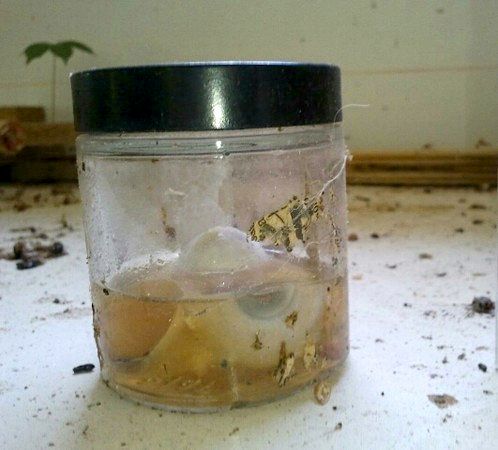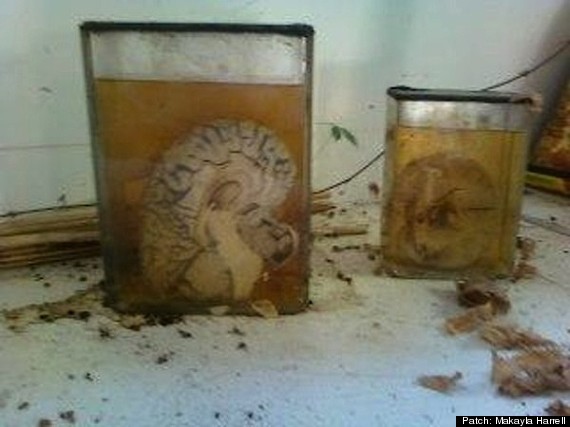
Jars of human remains, likely used for scientific research, have vanished from a vacant home in Caledonia, Wisconsin--and the tale behind the missing body parts has the small town buzzing.
The three specimens belong to Dr. Grant Shumaker, a neurosurgeon who moved from the home in 2006 and now lives in South Dakota, according to Caledonia Patch.
Dr. Shumaker years ago thought movers packed the jars with his other items. The Journal Times reported that when Dr. Schumaker never found the jars after moving, he assumed they had been lost in transit or taken by the movers: "He always wondered what happened to them," Caledonia Police Lt. Gary Larson said.
It turns out the jars were left behind in Caledonia and recently found by passersby Makayla Harrell and her boyfriend, Patch reported. The couple notified police of the discovery, but when officers arrived at Dr. Shumaker's old home, the jars mysteriously were missing--once again.
“They (the human remains) looked like they had been there for a very long time. There were bugs all over it. There were spider webs all around it. The fluid in the jar was discolored and it was evaporating,” Harrell told Patch.

Lt. Larson told FOX6 News in Milwaukee that the remains were stored in formaldehyde, which is more of a concern to police than identifying the person responsible for the jars' disappearance.
“You don’t want to have contact with formaldehyde on your skin for prolonged periods of time, and we would rather that the items be returned so that we can make sure the formaldehyde, and the organs are properly disposed of,” Lt. Larson told FOX6.
The jars reportedly had been a part of Dr. Shumaker's life ever since his years as a student at the Yale School of Medicine. He told police that a prominent doctor sealed the three jars in 1901--making the specimens older than a century. One jar contains half of a human brain, one holds two eyeballs, and another holds an “unidentifiable organ,” according to Patch.
The science-savvy understand that human remains and cadavers are a mainstay of biomedical research and medical education. So the jars themselves "were probably used for display purposes, and it’s not as bizarre as one might think,” Lt. Larson told FOX6. But the specimens' whereabouts remains a mystery.
Watch the FOX6 report below:

